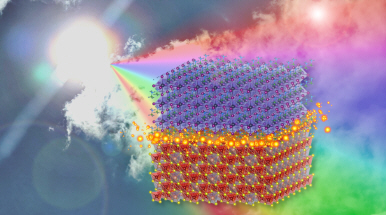
A recent study published in Sustainable Energy & Fuels reports an alternative strategy to enhance the stability of perovskite solar cells (PSCs), a key challenge still limiting their large-scale application. The research was conducted by Elisa Fabbretti, Dr Vanira Trifiletti, Dr Giorgio Tseberlidis, Dr Alessandro Minotto, Prof. Adele Sassella, and Prof. Simona Binetti from the Department of Materials Science at the University of Milano-Bicocca, in collaboration with Swansea University (UK).
The paper, entitled “Enhancing the stability of inverted perovskite solar cells through Cu2ZnSnS4 nanoparticles hole transporting material”, investigates the use of Cu2ZnSnS4 (CZTS) nanoparticles as hole transporting material (HTM) in inverted PSCs. CZTS, composed of non-toxic and earth-abundant elements, offers favourable charge transport and was tested here as an inorganic alternative to conventional organic HTMs. The study demonstrates improved operational stability for CZTS-based devices compared to standard ones, both under ambient conditions and in the presence of humidity. Notably, the CZTS-based PSCs exhibited increasing efficiency over time, whereas the control devices experienced performance degradation.
For the scientific significance of its findings, the article was selected among the top 10% best publications of 2025 by Sustainable Energy & Fuels and included in the “Recent HOT Articles 2025” collection. It was also featured on the cover of the March 2025 issue of the journal.